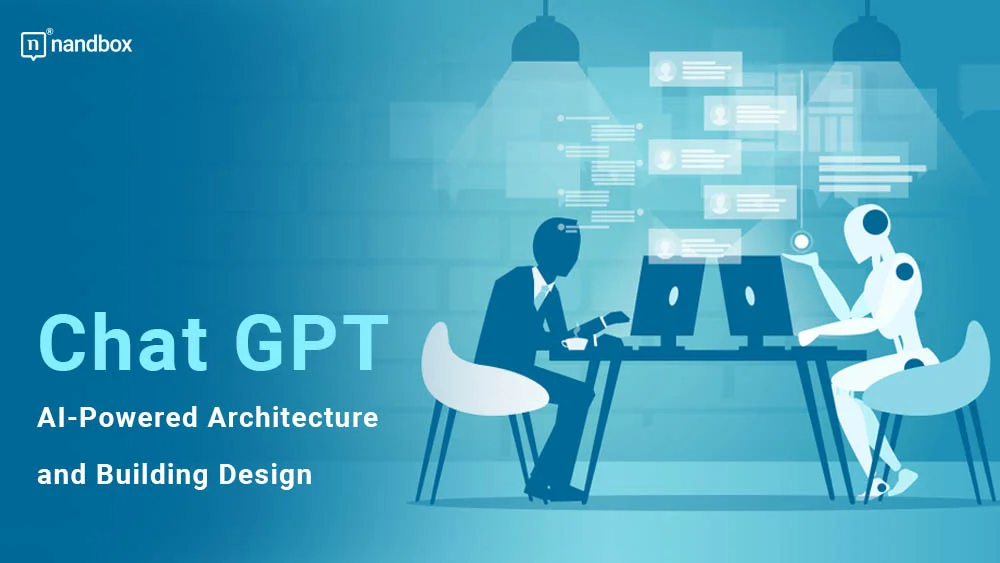The Role of AI-Powered ChatGPT in Modern Architecture and Design
Up until recently, AI-powered chatbots were helpful but had limited applications. Chat GPT changed everything with its multiple functions and advanced abilities. Professionals in many fields can benefit from Chat GPT. Surprisingly, architecture is one of those fields. It relies on geometrical measures and some creativity, and as it turns out, AI can help with both. Want to learn how Chat GPT can influence architecture and building design? This article got it all covered.
What is Chat GPT?
Developed specifically for use in chatbots, Chat GPT is a language generation model based on the widely used GPT (Generative Pre-training Transformer). It has been taught to respond to questions and statements with natural language, thanks to a massive database of transcripts of actual conversations. To generate cohesive and varied text, GPT models combine techniques like unsupervised learning and transformer architecture. Taking this a step further, Custom Magento development solutions, chat GPT, incorporate an understanding of conversational dynamics and the ability to respond appropriately to enhance your eCommerce experience.
The most recent models of ChatGPT are GPT 3.5 and GPT 4. OpenAI, the developer company, released GPT 3.5 in November 2022 with widespread popularity and GPT 4 in March 2023. The latter is the more advanced installment.
Use of Chat GPT in Architecture
Next, we will discuss how architects can make use of Chat GPT.
Enhancing Communication
At the most basic level, ChatGPT delivers human-like responses, helping architects streamline communication with stakeholders, clients, and fellow designers through personalized emails, design reports, and comprehensive project descriptions.
Beyond communication, it serves as an AI Presentation Maker, empowering architects to craft persuasive proposals and presentations for building designs. Moreover, ChatGPT enhances project management by generating design specifications like materials lists and technical drawings.
For architects seeking to elevate their presentations and client interactions even more, Home Designs provides additional AI-powered tools and resources seamlessly integrated into their workflows.
Building Designs
Chat GPT can facilitate the process of generating building design proposals and use them to produce detailed design documentation, like 3D models and 2D drawings such as plans, sections, and elevations. The process will be more efficient, taking a fraction of the time it takes to do it manually.
To further ensure that architects’ designs comply with local and national building codes, saving money and reducing construction time, ChatGPT could also be used to generate building codes and regulations.
Reinforcing Creativity
Chat GPT can help architects by generating new design ideas and inspiring them to think unconventionally. For example, when stuck designing a building, the architect can use Chat GPT to come up with alternative design documentation in different styles. That will give the designer a different perspective and help them devise a creative solution.
In addition, ChatGPT can be used to brainstorm potential designs, opening the door to a wide range of aesthetic possibilities. As a result, architects will have a broad selection of work to showcase, which should attract more customers.
Conducting Research
Research is a part of any successful career. Chat GPT can help architects do industry-related research to acquire knowledge and stay updated on all new trends. It could be used to learn about new materials, power tool sales, techniques, and styles in the construction and design industries.
Does Chat GPT Qualify as an Architect?
We’re not the first to ask these questions; others did before us and took a step further to test the language model GPT 4 using the Architect Registration Examination (ARE), given by the National Council of Architectural Registration Boards (NCARB).
The exam tests many parameters, like:
- Analysis and Programming Questions on this test will probe the ability to evaluate how various factors—including project type, lot size, zoning and code requirements, and budget—influence the final design of a building.
- Questions on the Project Planning and Design exam will test the ability to translate broad project goals into specific structural specifications (or series of buildings). There are inquiries about how to choose suitable building systems in terms of budget, building codes, and other criteria.
- In the Project Development and Documentation exam section, the architect will be asked to demonstrate their knowledge of the steps required to take a design from concept to a set of construction documents (including drawings, specifications, and the like). Document processing plays a pivotal role in the architect’s ability to transform design concepts into comprehensive construction documents. Efficiently handling and organizing the drawings, specifications, and other related materials is essential for a successful project development process.
- The questions in this section focus on architectural project management, including the steps necessary to meet professional and legal standards and to complete the work on schedule, within budget, and to client satisfaction.
- The Construction and Evaluation section contains questions regarding the construction process and post-construction structure evaluation.
- The Practice Management section is dedicated to architectural consulting business management. Rules and guidelines for working with clients, supervising an architectural team, generating new business, and running a profitable business are covered.
The Results
The result was astonishing; ChatGPT passed the exam with 70%. In three questions, the chatbot scored higher than the passing score. It also passed the remaining sections within the passing range. We’re talking about a test with a low passing range of 40–60%.
It’s noteworthy that GPT 4 can process and analyze images but only responds with text. Some questions were omitted because they required GPT to give back designs and images.
Will AI Replace Architects?
The answer is indefinite. As of today, Chat GPT 4 still needs human input and supervision to eliminate any irreversible errors. Not to mention that it couldn’t design on its own until now because of its inability to generate images. Architects can combine other AI image generators with Chat GPT to visualize a concept, but it still doesn’t make up for the human effort, precision, and accuracy. It will help architects, but for now, it will not replace them, as impressive as it is. However, we can’t speak of tomorrow and what it might bring in terms of technological breakthroughs. If you are concerned about the risks of architects using Chat GPT when they have been asked not to, you will need to use an AI detector or AI checker to identify the difference between human and Chat GPT-generated content.
Unfortunately, Chat GPT can’t design your app for you, but you can do it yourself. No-code app building platforms, like the nandbox native app builder, allow you to control the look of your app with easy drag-and-drop mechanisms. Give it a shot!





